Your teeth need as much love as any other part of your body. And brushing them every day just isn’t enough. Whenever you’re going through your oral hygiene routine, your dental floss should be there. What you can’t see doesn’t mean that it does not exist.
Sometimes, you can really feel the discomfort caused by food stuck between your teeth. However, many times, the food particles are so small that you don’t even feel a thing. But they’re there, very present. Initially, you might find dental flossing a bit of a hassle, but once you’ve made it a part of your routine, you’re golden.
The American Dental Association surveyed the flossing habits of people. It found out that instead of using teeth floss to remove food between their teeth, 61% of the respondents used their fingernails, 40% folded paper or cards, 21% cutlery, and 14% safety pins (never do that!), and 7% their strands of hair.
There’s something worse than that: not many people floss their teeth every day. Only 16% said that they floss the teeth at least once a day. Many people refuse to floss because flossing takes too much of their time, is painful, or simply gross. About the gross part, having food stuck between your teeth and smell is much worse and grosser.
What Is Dental Floss?
Dental floss is a fine piece of thread-like material that can reach the area between your teeth for removing any plaque build-up. When it’s said that dental flossing is as important as brushing your teeth, you shouldn’t think that the two are interchangeable. You need to brush your teeth and floss them.
Brushing will remove the food particles stuck on the front and back of the teeth. The bristles of many toothbrushes aren’t fine enough to reach the area between the teeth without hurting them.
You can accomplish this feat with dental floss, though. The thread can easily move up and down the areas between the teeth while efficiently removing all the food particles.
What Are The Different Types Of Dental Flosses?
Believe it or not, there are different dental floss types available in the market. You won’t have much of an excuse to not floss after finding out the kinds of floss that you can use.
Standard Floss
This is the quintessential floss that you see plastered everywhere. A thin nylon thread that comes in a waxed and unwaxed variety. The waxed floss comes with a coating of wax on top of the thread, so it can make for a thick dental floss.
Also, it is generally stronger than unwaxed and thin dental floss, which is prone to breakage. Waxed floss can also easily slip between the teeth, as it reduces friction.

So, if you have crowded teeth, it is better to use waxed floss. One thing to keep in mind is that a wax floss has an added layer of wax on top of the thread, so it might make it a little difficult for you to get it between your teeth. But once it does, you can easily manoeuvre it around your teeth.
Super Floss
Super flosses usually have stiff ends with a spongy midsection. You take the stiff end and insert it between your teeth and use the different sections of the floss to clean different areas of the teeth. You can use the spongy mid-section to clean your dental appliance. Super floss is the best dental floss for bridges and braces.
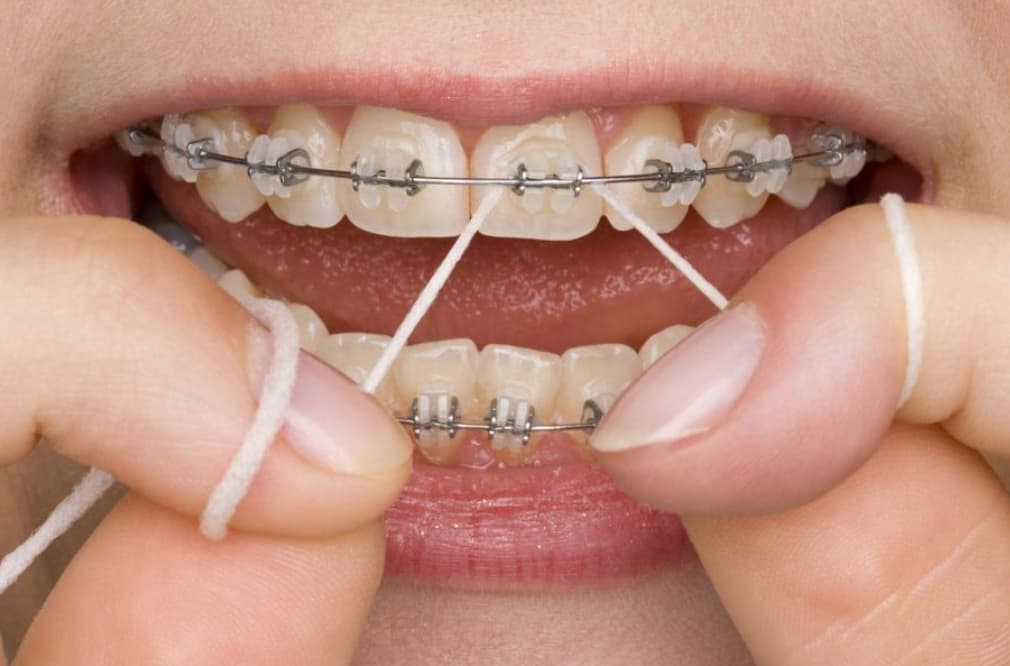
Dental Tape
Dental tape is broader and flatter than dental floss. It is generally considered a good option for those people who have large gaps between their teeth.
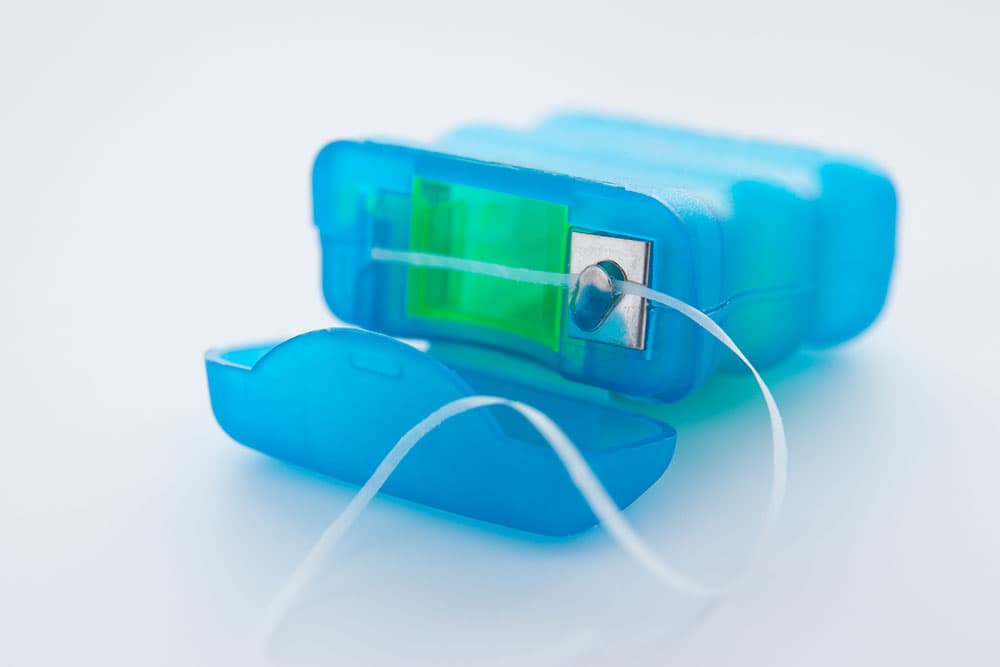
Floss Holder
Not everyone finds using a standard floss easy or doable. People who have arthritis or are facing any other issue with their hands might find it difficult to twist the thread of the floss around their fingers. It can become difficult to move it up and down between the teeth.
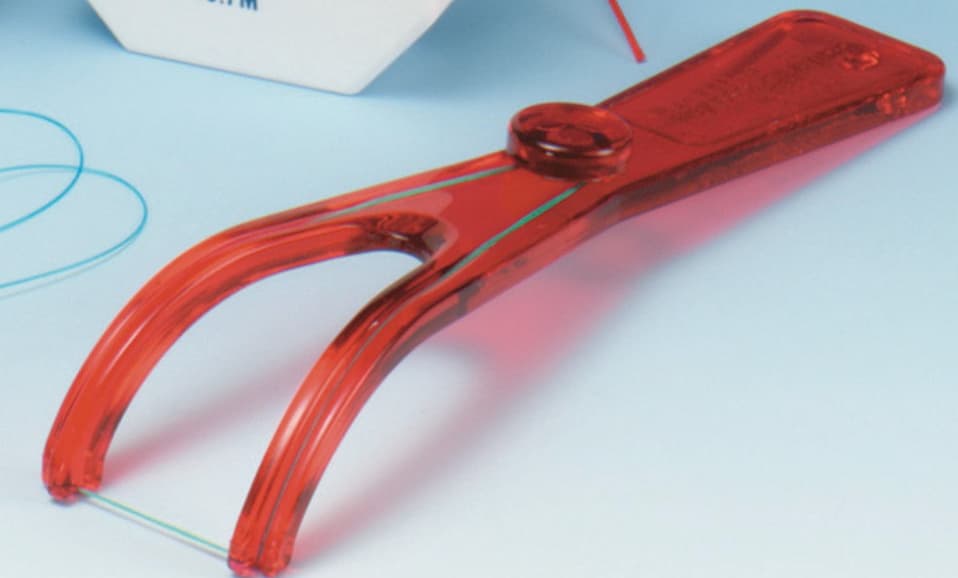
Even children can find it difficult to use standard floss. A floss holder can help you here. A floss holder comes with a small handle that curves at the top and the bottom with a floss thread stretched taut in between.
Dental Floss Picks
Dental floss picks or dental floss sticks are also used by some people because they find them more convenient.
You can hold the stick in hand, and with the dental floss stretched across the c-shaped curve at the end of the floss, you can get the spaces between your teeth.
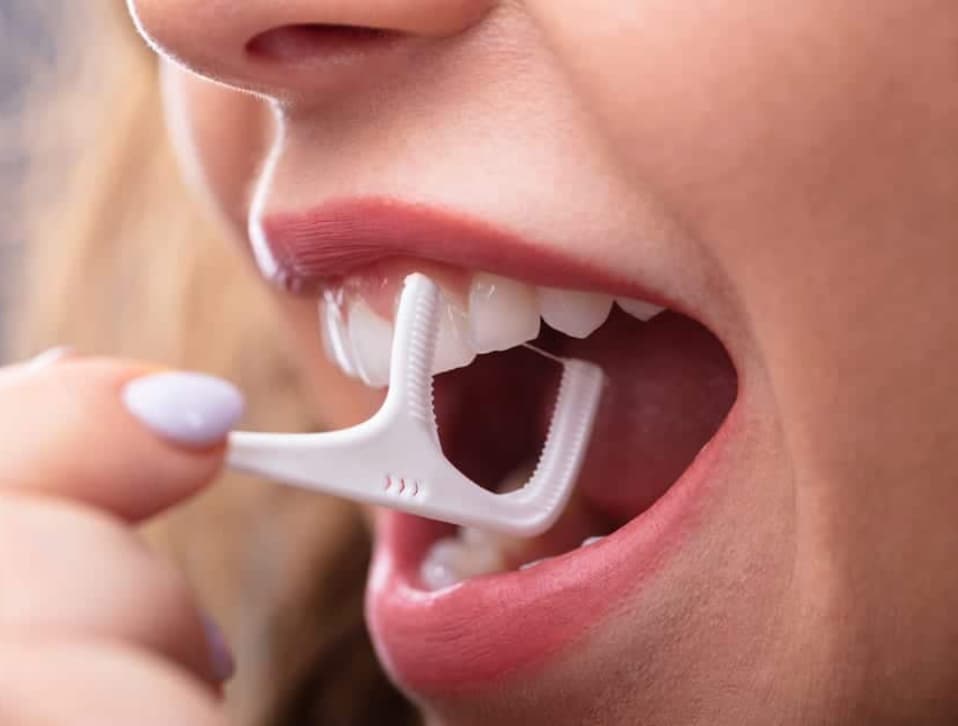
However, some dentists think that they’re not good for the teeth because they can cause damage to the gums. They may slide more suddenly down the teeth and hit your gums (may even make them bleed).
Electric Dental Floss
There are different types of electric dental floss available out there. Electric air and water floss can help remove food particles between your teeth. However, they have some drawbacks. Water flossers aren’t as flexible as standard flosses.
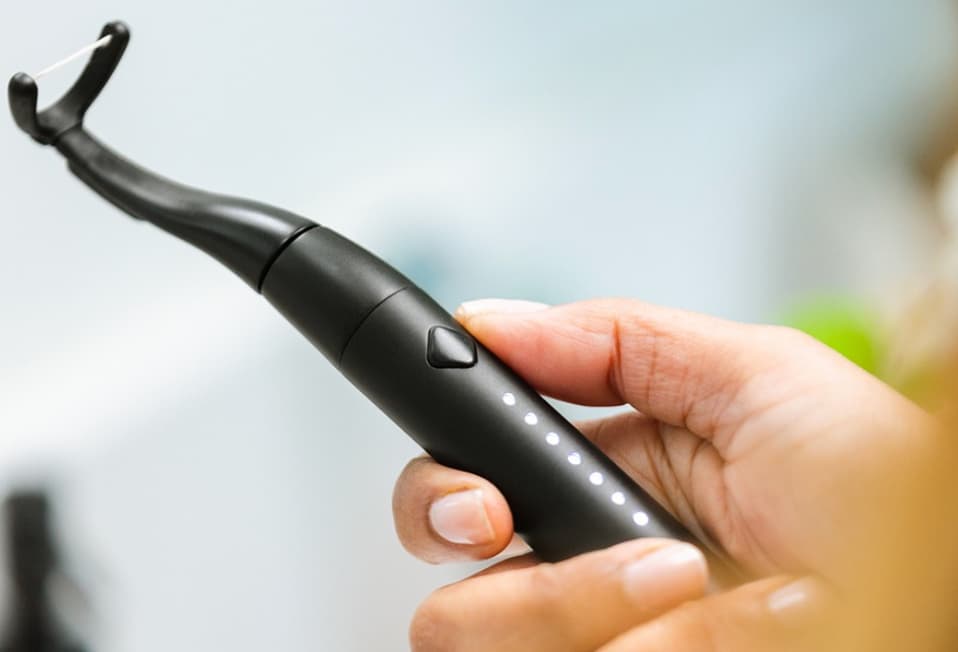
They need water and electricity to operate so you can’t just use them anywhere (after having a hearty meal at a restaurant, for instance!). They are, of course, more expensive too. But they can do a good job at removing the plaque build-up if you’re not able to use standard floss.
Electric air floss also has its cons. When using standard floss, you take the thread right up to the gum pockets and clean them. This might not be possible with an air floss. It might also not remove the food stuck between the teeth that efficiently. Still, using a dental floss that’s electric is a better option than not flossing your teeth at all.
Flavoured Floss
Many people have qualms about using dental floss in the first place. If you find flossing too tedious, you can consider using flavoured floss. Mint flavoured floss can always leave your breath minty fresh, especially in combination with your toothpaste.
How to Choose The Best Dental Floss For Your Teeth?
Different types of floss are available in the market because not everyone has the same set of teeth. Some people have overcrowded teeth, while others have large gaps between them. Some people wear braces or have dental bridges, which make it difficult for them to use standard floss.
If you have overcrowded teeth, go with a standard wax floss as it will work the best for your teeth. Dental tape works best for those who have large gaps between their teeth. Super floss is the best dental floss for people with bridges and braces.
Flossing Teeth Benefits
One of the biggest benefits of flossing teeth is that removing food particles between your teeth stops plaque build-up. This will prevent your teeth from forming cavities. Also, since the thread of the dental floss can reach right up the gum pockets and clean them, it can also prevent gum disease.
Another good thing about using dental floss is that the foul smell from decaying food doesn’t come in the way. The stuck food particles can end up giving a very bad smell to your mouth. With a simple strike of a thread, you can take care of it. So, there are many flossing teeth benefits, which is why you should never skip doing it.
How To Use Dental Floss?
There are many ways in which your dental flossing can go wrong. You can end up making your gums bleed, or you might end up doing a pretty bad job of cleaning the area between your teeth. If you’re wondering how to floss teeth properly, do the following:
- First of all, wind the floss on the middle or index fingers of your right and left hand. Figuring out the configuration that’s most comfortable for you is important. It’ll make manoeuvring the thread easier for you.
- Zig-zag the thread up between your teeth, and clean the gum pockets.
- Curve the thread around the tooth in a c-shape to clean the surface (back and front) and the sides of the teeth. Best way to floss teeth is to form the c-shape.
- Repeat the same process on the other side of the tooth.
- Don’t panic if you’re flossing for the first time and your gums start bleeding a little. It might happen because of a lot of reasons, one of them being the wrong technique. You should remember to be gentle but not too gentle when using dental floss.
Many people also ask whether they should brush or floss first. According to the National Health Service (NHS), it is best if you floss teeth before brushing them.
The plaque is dislodged, and the fluoride from the toothpaste will remain between the teeth (a reason why it’s recommended that you spit the toothpaste out and not gargle with water).
How To Floss Back Teeth?
Flossing the back teeth can be a bit more tricky because the cheeks come in the way. However, you can still get it done by opening your mouth more to one side.
Or you can position your fingers in a way that they push back on the cheek a little as you’re working your way through the cracks between the teeth.
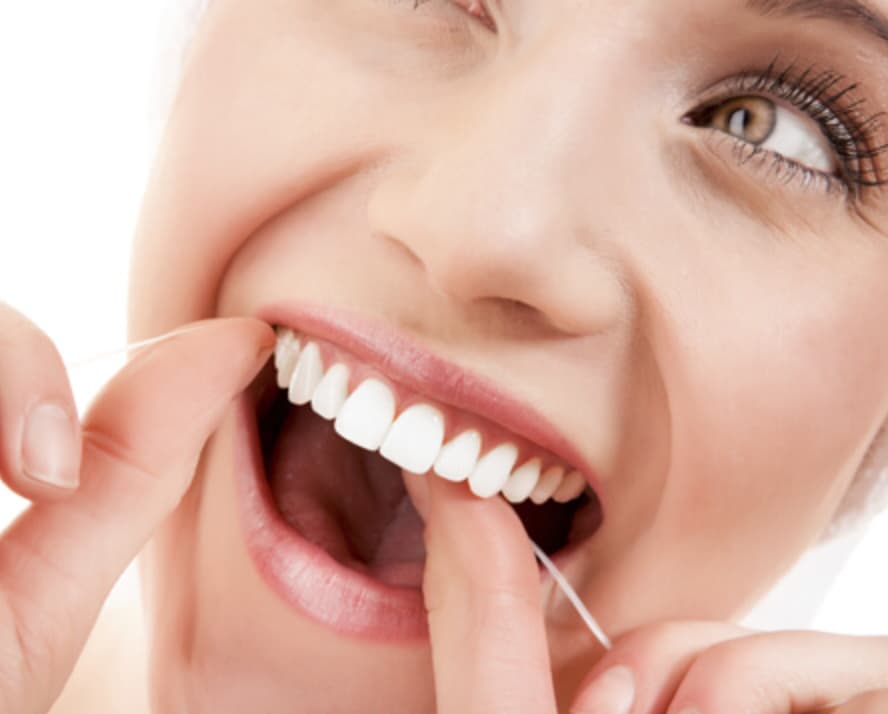
If it’s still difficult for you to get your back teeth, you can consider using a water flosser or inter-dental floss brush instead
How Often To Floss Teeth?
Many people ask the same question: How often should I floss my teeth? According to the American Dental Association (ADA), you should floss your teeth at least once a day.
But this doesn’t mean that you cannot floss more than once. If you have food stuck between your teeth, of course, you shouldn’t wait till before going to bed to remove the food particles.
If you’ve only just had dental treatment, then flossing your teeth is even more important. Having crowns and veneers means that you need to take even more care of your teeth than before. Dental cleaning floss will help keep your teeth free of plaque.
Is Dental Floss Harmful?
One investigation by the Associated Press showed that flossing could damage gums, teeth, and dental work. The tiny tears and wounds can also cause bacteria to enter your bloodstream, which can cause an infection. Flossing might cause some discomfort in the beginning, but if done right, you will be doing yourself a favour by flossing every day.
To Conclude
Floss and dental hygiene are related to each other. Flossing is as important as brushing your teeth which should be done every day. While many people skip doing it altogether, considering it inconvenient, it is important for healthy gums and teeth.
You can experience tooth decay, gum disease and tooth loss. If you’re experiencing this kind of dental problem or just looking to get dental implants Turkey, veneers or crowns, you can contact us to book your (quite affordable) appointment at a dental clinic in Turkey.
FAQ
Does flossing create gaps in teeth?
Improper flossing technique may end up damaging your gum tissue, which can cause gum recession (you have to be especially careful about the pointy end of dental floss picks). That can, in turn, leave gaps between your teeth. Also, it might seem that floss left gaps around your teeth if you dislodge plaque, but in reality, the gaps might’ve been concealed by the plaque.
How often should I floss my teeth?
You should floss at least once a day. The time of the day doesn’t matter here, but it’s better if you do it before brushing your teeth.
Is flossing good for your teeth?
Floss can be good for your overall oral health as it gets rid of plaque (which can also help with gum disease), lowers the risk of cavities and can even give you a better breath.
Can flossing break your teeth?
Flossing shouldn’t break your teeth because your teeth are much stronger than the thread of the floss. However, if you have a loose, badly damaged tooth, pressure from floss might damage it further.
Can flossing make your teeth loose?
Flossing might make your teeth loose if improper technique is causing gum recession. Since your gum tissue holds the teeth in place, if it starts to recede, it can affect the anchoring of your teeth.
Can flossing whiten teeth?
Flossing essentially cleans the spaces between teeth. It’s not for whitening, but it can make your teeth look cleaner. However, there are “whitening flosses” that either have abrasive or hydrogen peroxide. But because the point of contact is so little, it’s unlikely to do much.
